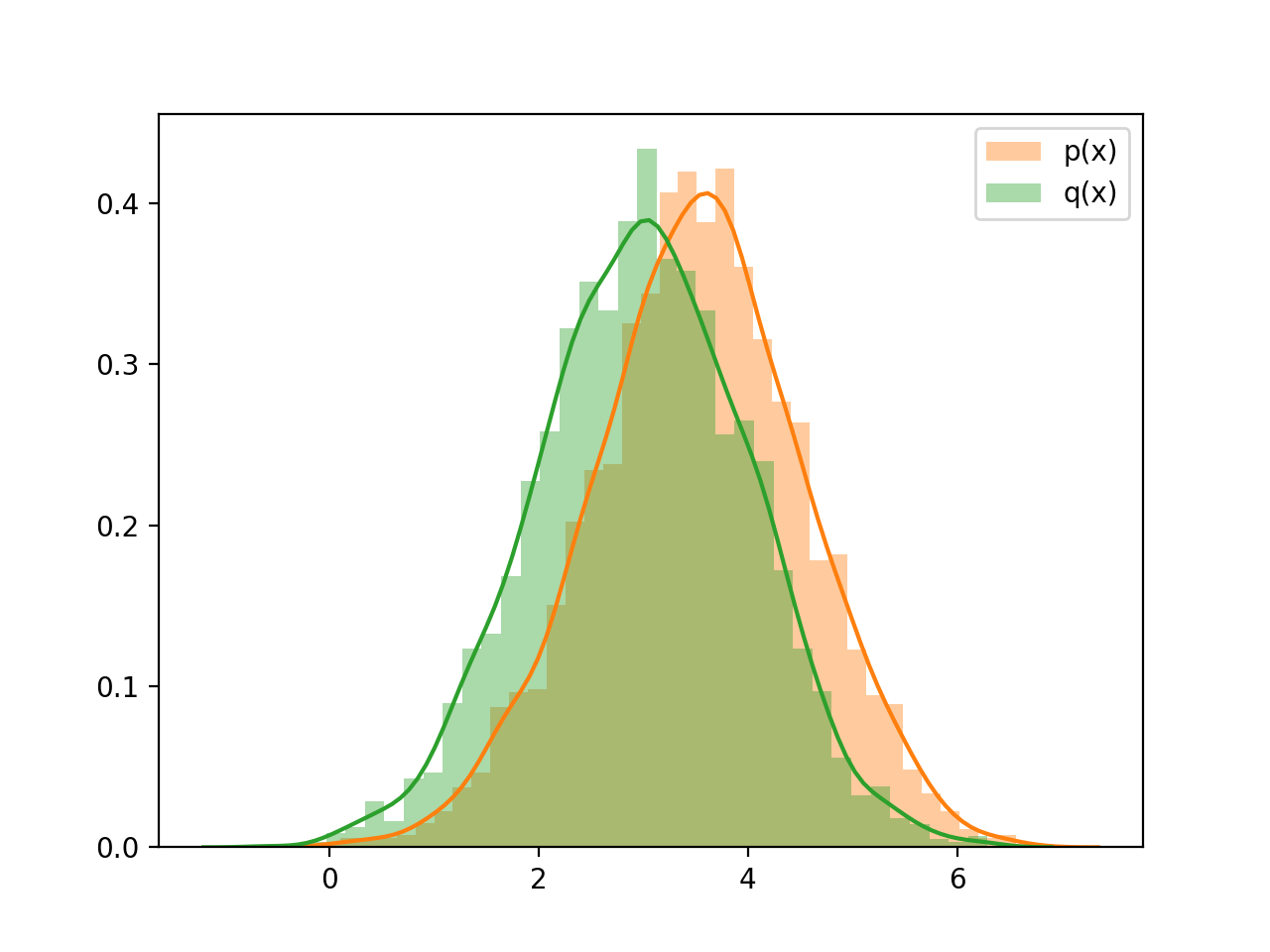Importance Sampling
Definition
Consider a scenario for calculating an expectation of function f(x), where x~p(x)
E[f(x)] = ∫ f(x)p(x) dx ≈ 1/n Σ_n f(x_i)
The Monte Carlo sampling is to simply sample x from p(x), and take the average of all samples to get an estimation of the expectation
Problem:
What if p(x) is very hard to sample from?
Are we able to estimate the expectation based on some known and easily sampled distribution?
Say:
p(x) p(x_i)
E[f(x)] = ∫ f(x)p(x) dx = ∫ f(x) ---- q(x) dx ≈ 1/n Σ_n f(x_i) ------
q(x) q(x_i)
p(x) - the distribution hard to sample from
q(x) - the distribution easy to sample from
p(x)/q(x) - sampling ratio or sampling rate, which acts as a correction weight to offset the probability sampling from a different one
where x is sampled from q(x), (q(x) should not be 0)
By this way, estimating the expectation is able to sample from another distribution q(x)
Variance:
Var(X) = E[X^2] - E[X]^2
We need to avoid the situation when p(x)/q(x) is large (results in large variance), where X is f(x)p(x)/q(x)
We need to select proper q(x) that results in even smaller variance
python Example
Draw two Gaussians with p=N(3.5,1), q=N(3,1), sample size=1000
import numpy as np
import matplotlib.pyplot as plt
from scipy.stats import norm
import seaborn as sns
def f(x):
return 1/(1+np.exp(-x))
def dist(mu=0,sig=1):
return norm(mu,sig)
n=1000
mu_tar=3.5
sig_tar=1
mu_app=3
sig_app=1
p=dist(mu_tar,sig_tar)
q=dist(mu_app,sig_app)
plt.figure()
sns.distplot([np.random.normal(mu_tar, sig_tar) for _ in range(3000)], label="p(x)")
sns.distplot([np.random.normal(mu_app, sig_app) for _ in range(3000)], label="q(x)")
plt.legend()


Sample from p(x), naively
v=[]
for i in range(n):
x=np.random.normal(mu_tar,sig_tar) #sample from p(x)
v.append(f(x))
np.mean(v)
>>0.9565661399403137
np.std(v)
>>0.04655246059295081
Sample from q(x), but with importance sampling
v=[]
for i in range(n):
x=np.random.normal(mu_app,sig_app) #sample from q(x)
v.append(f(x)*p.pdf(x)/q.pdf(x))
np.mean(v)
>>0.9490444921104262
np.std(v)
>>0.5341476729005751
Try another q=N(1,1) with sample size=1000, increase sample size may help
the more different the distributions are , the more samples we need
n=1000
mu_app=1
sig_app=1
q=dist(mu_app,sig_app)
v=[]
for i in range(n):
x=np.random.normal(mu_app,sig_app) #sample from q(x)
v.append(f(x)*p.pdf(x)/q.pdf(x))
np.mean(v)
>>1.0298267560057017
np.std(v)
>>14.146791278018734
Reference
Importance Sampling Introduction
Later check!
Metropolis and Gibbs Sampling
